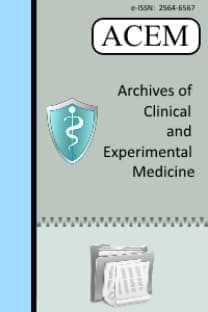MRI and Anesthesia & Sedation
MRI and Anesthesia & Sedation
MRI, Anesthesia, Sedation,
___
- 1. Bloch F, Hansen WW, Packard M. Nuclear induction. Phys Rev 1946;69:127.
- 2. Menon DK, Peden CJ, Hall AS, Sargentoni J, Whitwam JG. Magnetic resonance for the anaesthetist. Part I: Physical principles, applications, safety aspects. Anaesthesia. 1992 Mar;47(3):240-55. Review.
- 3. Health Quality Ontario. Magnetic Resonance Imaging as an Adjunct to Mammography for Breast Cancer Screening in Women at Less Than High Risk for Breast Cancer: A Health Technology Assessment. Ont Health Technol Assess Ser. 2016 Nov 1;16(20):1-30. eCollection 2016.
- 4. Enders J, Zimmermann E, Rief M, Martus P, Klingebiel R, Asbach P, Klessen C, Diederichs G, Bengner T, Teichgräber U, Hamm B, Dewey M. Reduction of claustrophobia during magnetic resonance imaging: methods and design of the "CLAUSTRO" randomized controlled trial. BMC Med Imaging. 2011 Feb 10;11:4. doi: 10.1186/1471-2342-11-4.
- 5. Meléndez JC1, McCrank E. Anxiety-related reactions associated with magnetic resonance imaging examinations. JAMA 1993;270:745-7.
- 6. Munn Z, Jordan Z. Interventions to reduce anxiety, distress and the need for sedation in adult patients undergoing magnetic resonance imaging: a systematic review. Int J Evid Based Healthc. 2013 Dec;11(4):265-74. doi: 10.1111/1744-1609.12045.
- 7. Barnea-Goraly N, Weinzimer SA, Ruedy KJ, Mauras N, Beck RW, Marzelli MJ, et al. High success rates of sedation-free brain MRI scanning in young children using simple subject preparation protocols with and without a commercial mock scanner–the Diabetes Research in Children Network (DirecNet) experience. Pediatr Radiol 2014;44:181–6.
- 8. Metzner J, Posner KL, Lam MS, Domino KB. Closed claims' analysis. Best Pract Res Clin Anaesthesiol 2011;25:263-76.
- ISSN: 2564-6567
- Yayın Aralığı: Yılda 3 Sayı
- Başlangıç: 2016
- Yayıncı: -
Chlorine e6 tabanlı Fotodinamik Terapinin MiaPaCa-2 ve MRC-5 hücreleri üzerindeki etkisi
Tuğba AYDOĞAN KİRİŞ, Saadet AKBULUT, Ayşenur KİRİŞ, Elif Sinem BİRELLER, BEDİA ÇAKMAKOĞLU, HAŞİM ÖZGÜR TABAKOĞLU
Primer dalak hidatik kist hastalığı: Olgu serisi
Ayetullah TEMİZ, Yavuz ALBAYRAK, Sadettin ER, Ayşe ALBAYRAK, Onur Bora ASLAN
Nadir görülen sol paraduodenal herni vakasi
Gülsen ATASOY, Yavuz ALBAYRAK, Ayetullah TEMİZ, Ahmet YALÇIN
Hacı Murat ÇAYCI, Umut Eren ERDOĞDU
Plasebo etkisinin nöral temelleri: Geçmiş bulguların gözden geçirilmesi ve çıkarsamalar
Dev splenik arter anevrizması: Bir olgu Sunumu
Tolga CANBAK, Aylin ACAR, Huseyin Kerem TOLAN, Fatih BAŞAK
Asim ESEN, Muhittin CALİM, Huseyin KADİOGLU
Nadir görülen sol paraduodenal herni vakası: Bir olgu sunumu
Gülsen ATASOY, Ayetullah TEMİZ, YAVUZ ALBAYRAK, Ahmet YALÇIN
